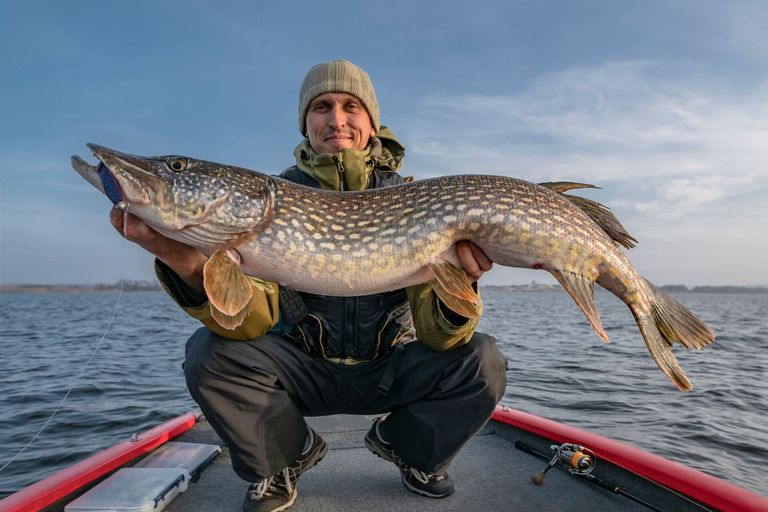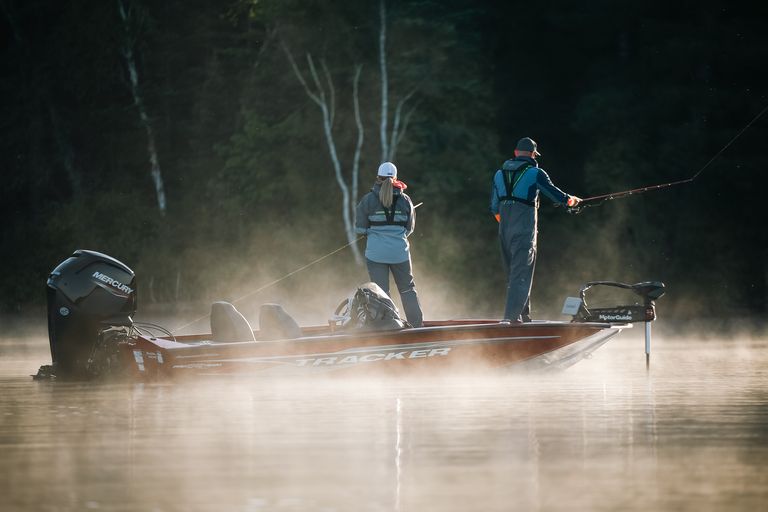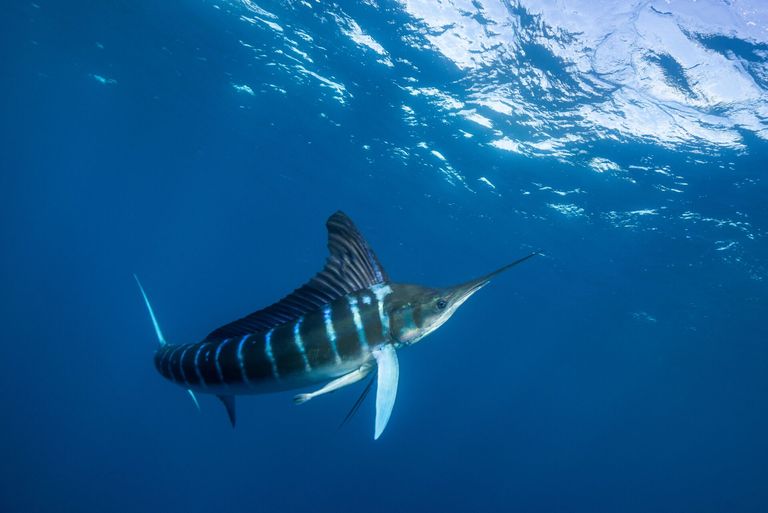A Guide to Bass Fishing for Beginners
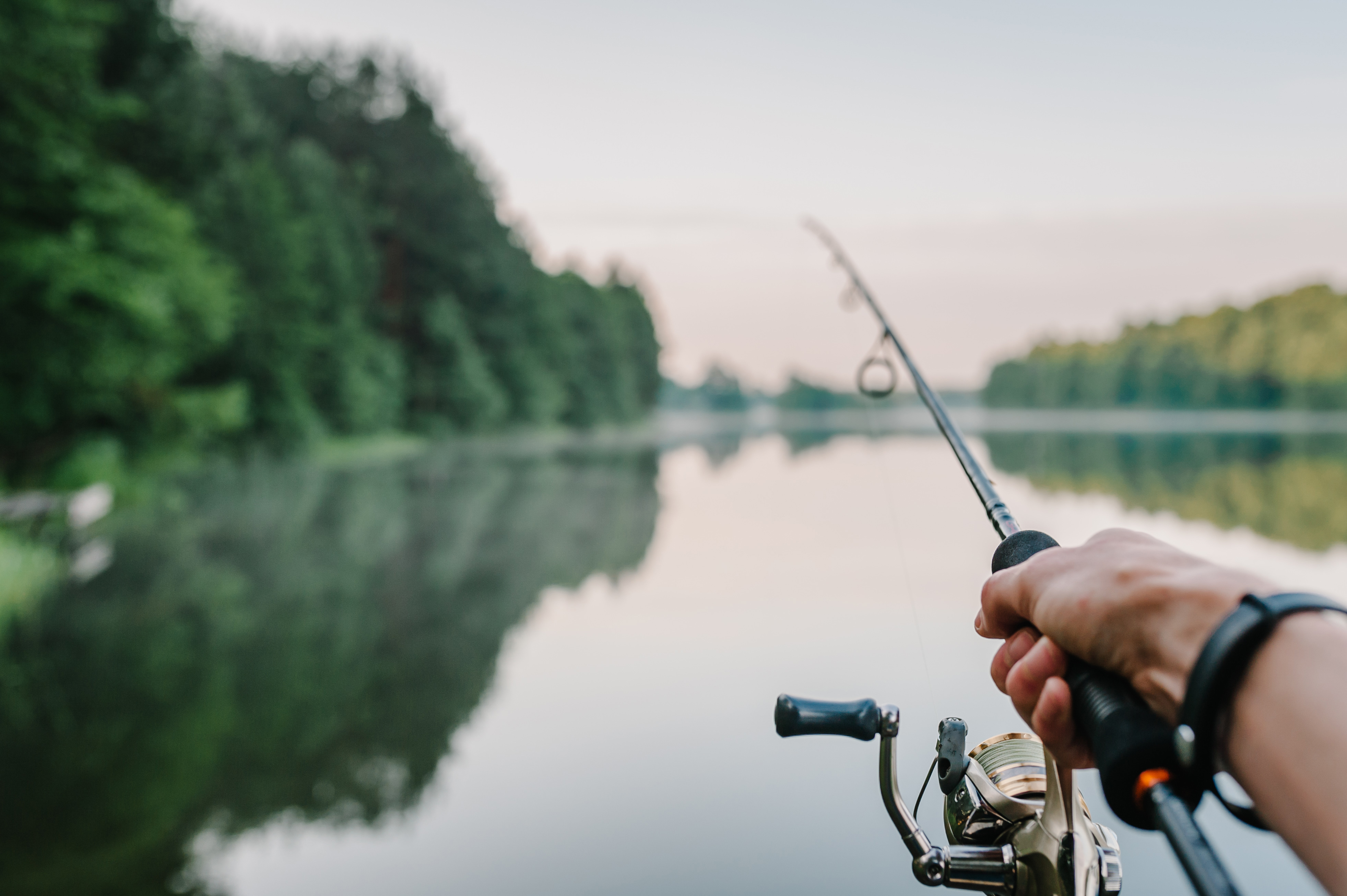
Many boaters enjoy bass fishing, a great way to spend time on or near the water. It's exhilarating at times while also peaceful when the fish aren't biting, and you have time to simply enjoy nature.
When you're just getting started fishing for bass, learning and understanding the basics is important. Starting with the essentials can help you have more fun and increase your success rate. Learning how bass behaves, gathering the right gear, and finding a good location are some of the basics. You'll also need to know how to stay safe when fishing from a boat!
Here's what you need to know about bass so you can have a great time on your outing and have the best chance to catch a lot of fish.
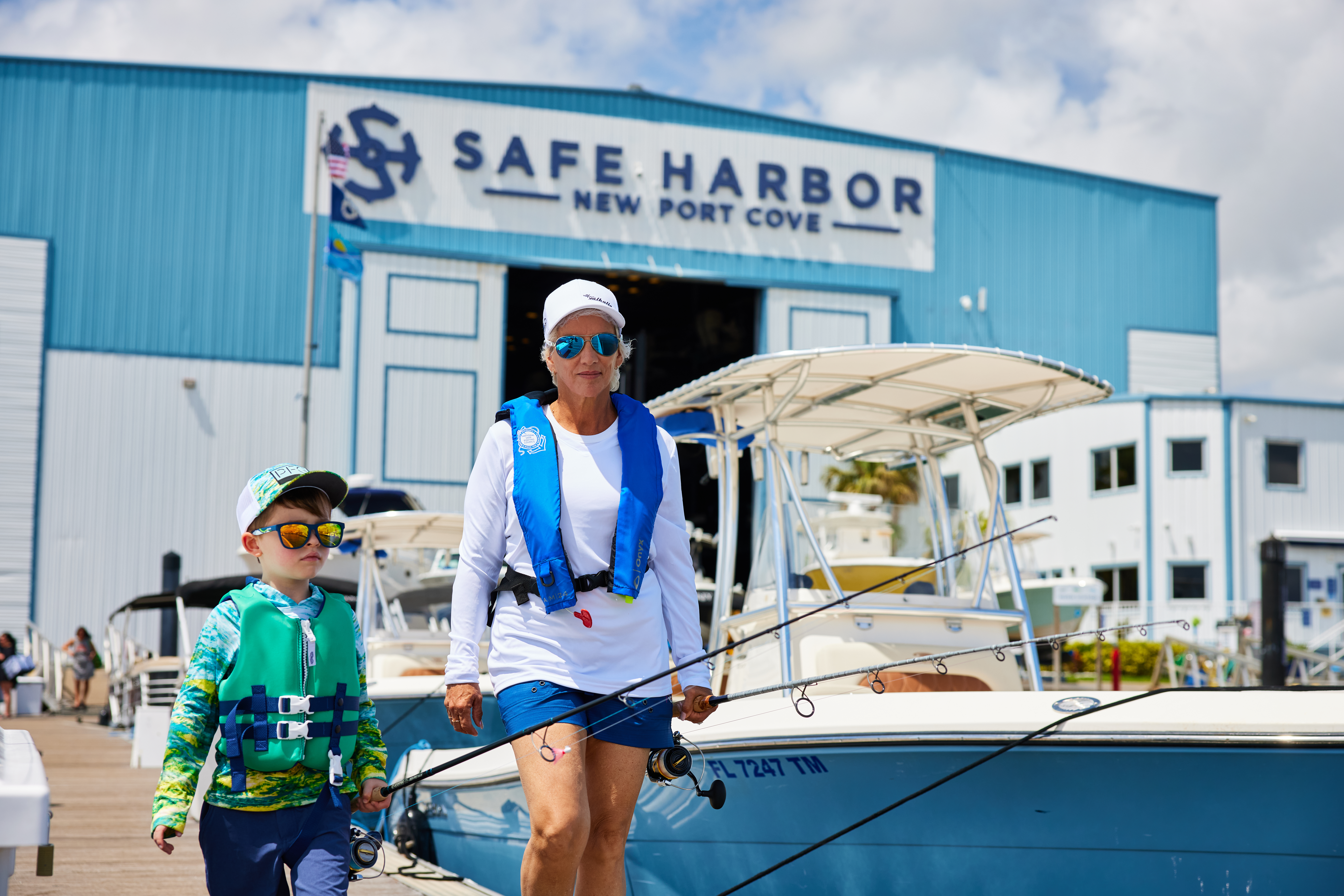
Understanding Bass Behavior
Bass are prevalent freshwater fish. They can be found in many locations, and when you catch one, they put up a good fight.
Knowing their habits is vital to improve your chances of catching them.
First, you need to understand where to find them. They like areas with many downed trees and submerged vegetation because they provide protection from predators and are great places to ambush their prey.
Bass eat insects, smaller fish, and crustaceans and are more likely to eat around dawn and dusk. If the temperature and weather are right, they may also eat during the middle of the day, but you generally won't have as much success trying to catch them then.
In the spring, they move into shallow waters for spawning, and they're easier to catch during that time. They also head to shallow water in the fall, but summer and winter will find them in deeper waters where the temperature and overall conditions are more stable.
If you plan to catch a lot of bass, spring and fall are the best choices.
What Gear Do You Need for Bass Fishing Success?
Selecting the right fishing gear is crucial for landing those catches and maximizing the enjoyment of catching bass.
If you're just starting as a new angler, a medium-heavy rod is a great way to handle most bass fishing situations. Depending on your comfort and skill level, you'll want to pair that rod with a baitcasting or spinning reel. Spinning reels are generally easier to manage if you're a beginner.
Then, get some monofilament or braided line. Some people like the stretch and forgiveness offered by monofilament, but a braided line is heavier, stronger, and more durable. You'll want a pair of line cutters, as well.
Your tackle box is the next piece of gear to consider. It should include several different lures for different conditions, including plastic worms, crankbaits, spinnerbaits, and jigs. Add a pair of pliers and a fishing hat to protect you from sun exposure.
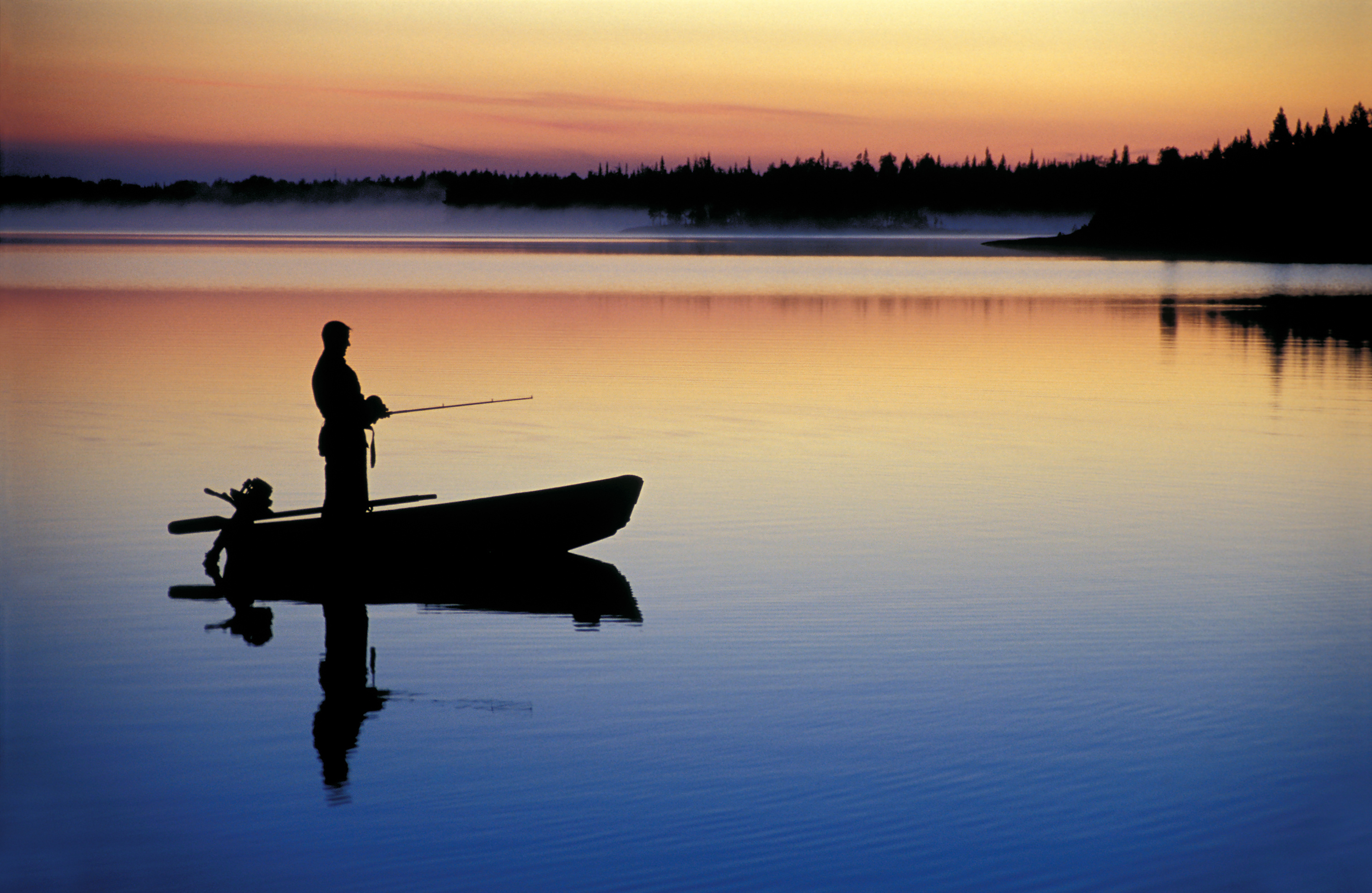
Choosing the Right Fishing Spot
Finding the perfect spot is part art and part science.
Most bass are found in water temperatures between 60°F and 75°F. A water thermometer can help you find ideal spots. Look for boulders, logs, or weed beds that offer natural cover, and consider going on overcast days.
Bass generally feels more comfortable in low-light conditions and may venture out to feed more often. If you choose to fish on a sunny day, try to close closer to dawn or dusk, as those times also have lower light levels, and bass may be more active at those times.
Bait and Lure Selection
Choosing the right bait or lure can feel daunting if you're new to fishing for bass, but it doesn't have to be difficult. You'll want to consider four main categories:
- Plastic worms
- Crankbaits
- Spinnerbaits
- Jigs
Worms are very effective because they're versatile and have lifelike movement. You can also rig them to avoid snags in heavy cover so you won't lose them as often.
Crankbaits are also really popular among experienced bass anglers. They mimic the appearance and movement of baitfish. You can use crankbaits effectively in open water, diving them deep to reach the more reclusive bass.
Spinnerbaits are excellent for fishing in areas with a lot of underbrush or near the edges of vegetation. Their snag-resistant design makes them ideal for these kinds of places.
If you're fishing in colder water or during spawning seasons when bass are less likely to chase after fast-moving prey, a jig can be the right way to catch them. It's important to adjust your selection based on the conditions you're fishing in and consider the bass's visibility, water depth, and activity level.
Good Casting Techniques
To catch those bass, you'll need effective casting to help your lure reach the right location. Of course, you also need to do this without startling the fish, and there are a couple of specific areas to consider to make this happen.
The first thing is your rod position. Hold your rod at approximately a 10 o'clock position, and then swing it smoothly to 2 o'clock before you let go of the line. Practice makes perfect with this technique, which can take some time to perfect.
You'll also need to alternate your casting angles to cover more area, which can increase your chances of finding bass. Remember, accuracy is often more important than distance.
Stay Safe
If fishing from a boat, you should always wear a life vest. You'll also need to follow local fishing regulations and monitor the weather and water currents.
Be sure to choose the right gear for the environment, and don't fish alone when you're just getting started.
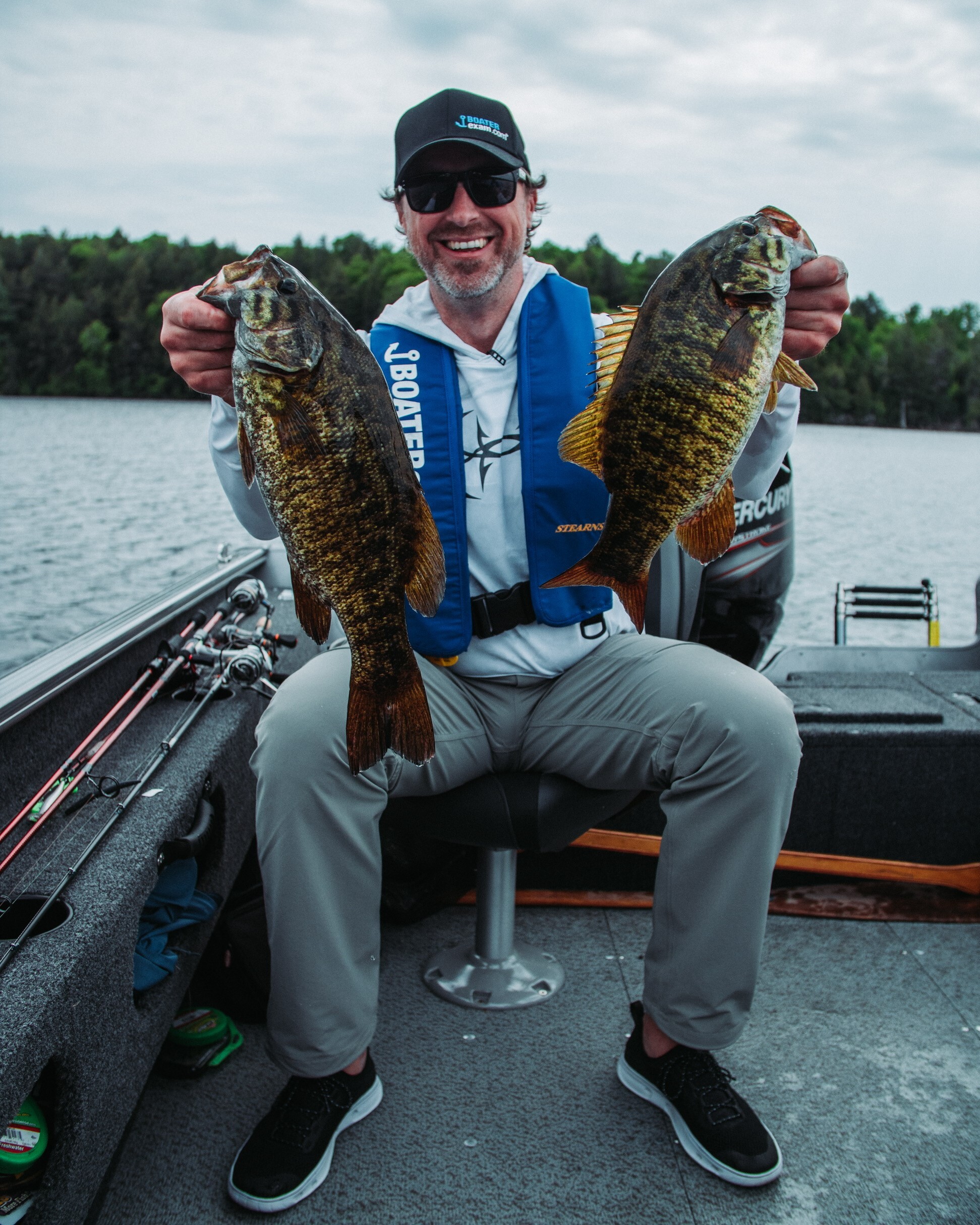
Make Your Bass Fishing Experience a Great (and Safe) One
With the right gear, knowledge, and preparation, you can confidently start your fishing adventures. Every experienced angler was a beginner at one point, but with patience and practice, you can soon move out of beginner status and have more success catching bass.
One of the best ways to protect yourself and have a better time on the water is to take a boater safety course through BOATERexam. Whether fishing in the U.S. or Canada, you want to be prepared for bad weather, other boats, or any other issue on your local waterways. A safety course can help you with the boating knowledge you need so you can focus on fishing!
So, before heading out to your favorite fishing spot this season, find the course for your state or choose the Canada-approved BOATERexam safety course and get certified!

